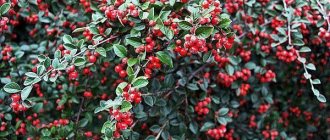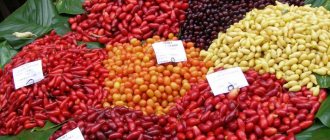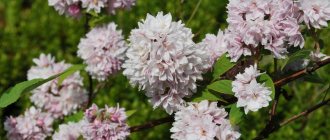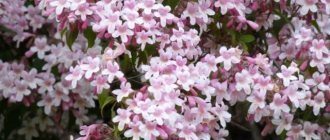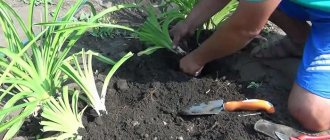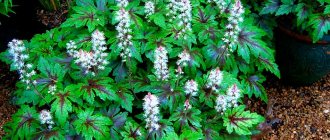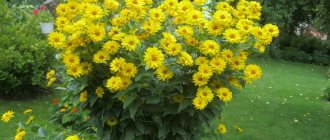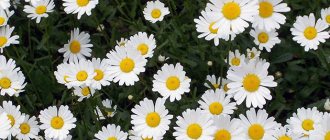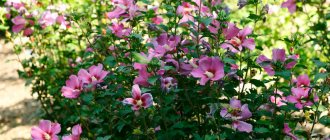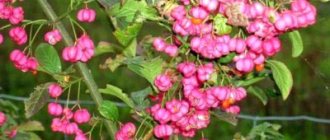Variety selection
Dogwood varieties cultivated on private and industrial farms are distinguished by a number of similar characteristics that must be studied first.
This information is very important when selecting plants for cultivation in specific climatic zones, since they do not take root everywhere. The crop in question tolerates temperature drops down to -30...-40°C. It is most widespread in Ukraine. It is ideal for cultivation in various climatic conditions, because in addition to high frost resistance, it is characterized by a good level of resistance to drought, diseases, and pests. The life form of a plant is a bush or tree. The height, regardless of the life form, can vary between 2–5 m. In the wild, bushes are characterized by a height of up to 3 m, and trees can reach 15 m.
Did you know? Ground and then specially processed dogwood seeds are used as a coffee substitute
. The wood is very strong, covered with cracks. Flowering occurs quite early, already in mid-April.
The fruits ripen from August to October. The berries are usually bright red, contain a drupe inside, and the flesh is fleshy. Several varieties with amber fruits were also bred. A full harvest can be obtained only 4 years after planting or grafting. If the tree is grown from seed, it will begin to bear fruit no earlier than the 8th year.
The most promising dogwood varieties for growing are:
- Elena is an early representative. The fruits ripen in early August, provided they are cultivated in the forest-steppe zone. The main advantage is stable fruiting and high frost resistance. The fruits are round-oval, bright red, weighing up to 5 g. The yield per 1 ha is 11.7 tons.
- Vyshgorodsky is another early specimen, whose fruits ripen in early August. Resistant to frost and drought. The fruits are medium-sized, 4.7 g each. When fully ripe, they turn dark red. The yield per 1 ha is 10.2 tons.
- Vladimirsky - produces large fruits weighing 6.5–7 g. The berries are dark red, almost black when fully ripe. Fruits ripen from August 15 to September 1, provided they are cultivated in the forest-steppe zone. Productivity - 12 t/ha.
- Amber - the fruits are small, 3.5 g each, yellow in color. They ripen between August 20 and September 20. Productivity - up to 10 t/ha.
- Petrovsky - belongs to the elite varieties. The fruits begin to ripen on August 20. The berries are bottle-shaped, weigh 5.5 g each. Productivity is 12.5 t/ha.
Harvest and storage
Dogwood fruits ripen gradually. You can determine the degree of ripeness of the berries by tasting the berries. Ripe fruits have a pleasant sweetish taste with sourness and a dense structure. Overripe berries are soft and not suitable for transportation and storage. Slightly unripe fruits are collected by hand and placed in containers. The collected berries are kept in small containers for 2-3 days for complete ripening and sent for storage. Fresh berries can be stored in the refrigerator for up to 12 days. They are placed in plastic bags. Temperature range 0-+2 degrees.
The vitamin composition of the product is well preserved when stored in the freezer of the refrigerator. Fresh berries sprinkled with sugar in a 1:2 ratio retain their beneficial properties. The product is stored in the refrigerator. Jams, jams, juice, and compote are prepared from dogwood. In addition to berries, dogwood bark, leaves, and roots are used to prepare decoctions, teas, and tinctures. The bark is collected in early spring, the leaves - when the plant is flowering, and the roots - in late autumn. For storage, they are dried and placed in paper bags.
Features of growing and caring for dogwood in Belarus
Caring for dogwood consists of regular feeding, loosening the soil, pruning and watering.
In the conditions of Belarus, it is recommended to grow dogwood in the form of a bush - this way it will survive the winter more easily. The crown is formed in the first 3–4 years of life. The height of the trunk should be no more than 50 cm. 5–7 main shoots are left on the trunk. Every year, diseased and dry branches that thicken the shoots should be removed. Trees that have reached the age of 20 years need periodic rejuvenation.
Video: pruning dogwood
When there are frosts down to –30 °C, you don’t have to think about covering the bush for the winter, and in case of stronger frosts, you should mulch the tree trunk with sawdust or peat, bend the bush to the ground and cover it with straw or spruce branches.
Dogwood should be fertilized annually 2 times per season: in the spring - with mineral fertilizers (15-20 g/m2 of urea and 10-12 g/m2 of potassium sulfate), and in the fall - with compost or other organic fertilizers (2-3 kg/m2), as well as phosphorus compounds. In addition, dogwood responds well to calcium, so chalk or other calcium-containing substances should be periodically added to the soil.
Latest posts 7 garden flowers that will grow even where nothing grows 5 popular American dishes with which you can decorate your New Year's table 11 flowers that are planted as seedlings in January: a review with names and photos
Photo gallery: the best fertilizers for dogwood
Dogwood roots are located close to the surface and absorb rain moisture well. In dry weather, the tree requires additional watering (usually 3 times during the summer is enough): at the beginning of the growing season, 14–15 days before harvest and 20–24 days after harvest.
The soil around the tree trunk must be regularly cleared of weeds and loosened
Since the roots are shallow, you need to loosen them carefully (with a pitchfork) to a depth of 6–7 cm
Planting a hedge of brilliant cotoneaster
It is possible that some owners of suburban areas liked the idea of zoning the territory with the help of this ornamental shrub. Then it will be useful for them to familiarize themselves with the step-by-step work on planting brilliant cotoneaster. It is immediately worth noting that he is a natural long-liver. After all, in one place it can grow up to fifty years. But this is only with proper care. This feature will smooth out the nuances associated with the price of cotoneaster, purchased in bulk.
It has already been said that this ornamental shrub does not have any special requirements for growth conditions. But if you have the opportunity to choose a place, then it is better to stay in a well-lit space. It won’t be bad if the groundwater in a particular area is deep. A strong wind constantly blowing in one direction can significantly affect the direction of growth of cotoneaster branches. Therefore, it is desirable that there are no continuous drafts in the area.
Stage 1 of planting cotoneaster for a hedge: choosing the season.
Two seasons are suitable for this work in the garden: spring and autumn. These months are perfect for planting seedlings of brilliant cotoneaster bushes. In this case, the plants will definitely take root.
Stage 2: preparation of nutrient soil.
It will be needed at the final stage of planting. Someone will say that cotoneaster is unpretentious, so there is no need to bother with the soil. But for the initial formation of a bush you need a good base. Therefore, you will have to make a mixture of sand, soil and compost (or peat). Their proportions should be as follows: sand and soil in equal quantities, and half as much compost. The final touch is lime. It will be needed enough to produce 300 g of this substance per square meter of plantings.
Stage 3 of planting a hedge of brilliant cotoneaster: preparing the holes.
Their depth should be about 70 centimeters. As already mentioned, it is better to design a trench. At the very bottom of the recess there is a drainage layer. Its thickness should be about 20 centimeters. Shards of broken red brick, as well as pebbles, can be used as drainage material.
Stage 4: landing.
Now place the seedlings at a distance of 30 cm from each other. Moreover, it is recommended to arrange them in a checkerboard pattern. This will make the cotoneaster hedge denser. Each bush should be sprinkled with the prepared fertile mixture. Moreover, this will have to be done in several passes. Each layer of soil will have to be lightly compacted. The top layer of soil should be flush with the root collar of the seedling.
Stage 5: mulching.
Plantings of brilliant cotoneaster need to be watered. Sprinkle mulch on top of the fertile layer. It is recommended to use peat. The thickness of this layer is 6-7 cm.
Dogwood varieties
- Elegant. Early variety. Bottle-shaped fruits. graceful. Weight up to 5 g, length up to 23 mm, width up to 15 mm.
- Semyon. Late variety. Ripening from early September to early October. The fruits are large, pear-shaped, shortened, slightly ribbed, the shortened neck of the fruit smoothly turns into the stalk. The fruit is thickened at the base. Weight up to 7.2 g, length up to 29 mm, width up to 18 mm.
- Amber. Variety with yellow fruits. ripens from August 15-18 to September 15. The fruits are “barrel”, oval-cylindrical. Fruit weight from 3.5 g. up to 4.0 g, length up to 21 mm, width up to 16 mm.
- Elena. Early variety. The fruits are round-oval in shape, from bright to dark red. Weight up to 6.0 g, length up to 25.2 mm, width up to 19.5 mm. The skin is thin, the flesh is tender and juicy. The bone is small
Dogwood Elegant
Kizil Semyon
Dogwood Amber
Kizil Elena
All descriptions of dogwood varieties note the viability and resistance of plants to drought and temperature changes. In the middle zone, growing dogwood is complicated by frosty winters. Garden dogwood plantings must be covered; in this case, the plant can tolerate frosts below 35 °C.
Useful properties of dogwood
Dogwood is a very healthy berry, a valuable fruit and industrial species. The fruits are used fresh, canned, in the confectionery industry, and folk medicine. Dogwood berries are rich in sugars, organic acids (3.4%), pectin (0.73%), carotene (1.65 mg%). The biologically active substances cahetins (up to 281 mg%) and flavonols (up to 169 mg%) normalize the permeability and elasticity of the walls of blood vessels.
Many important and easily digestible microelements for the body (calcium salts, sodium, potassium, manganese, iron, phosphorus) have made it possible to use dogwood for a long time in the treatment of various diseases.
The medicinal properties of its decoction were used against smallpox, measles, scarlet fever, and colds. Fresh fruits have a healing effect for gastrointestinal diseases and anemia. Decoctions of leaves and bark - for tuberculosis. This is an excellent anti-scorbutic remedy.
With its rich content, dogwood strengthens the body’s immune system, renewing and strengthening its vulnerabilities. The beneficial properties of dogwood allow it to be used in children's diet food.
A decoction of berries has antipyretic, anti-inflammatory and bactericidal effects.
Dogwood berry juice reduces blood sugar.
Its fruits are used to prepare a paste for astronauts and long-distance sailors. Dogwood products are recommended for medicinal purposes to be used by workers in hazardous industries to remove radioactive substances and heavy metal salts from the body.
Not only the fruits of dogwood are useful, but even the seeds and leaves, from which coffee and tea substitutes are prepared. Crushed fried seeds have antiseptic properties. Homeopathy uses the essence from fresh dogwood bark, and a drug with phytoncidal properties is made from the fruit to treat bacterial dysentery.
Solid wood with beautiful pink-white sapwood (sapwood is the layer of wood to which the bast and bark are directly adjacent), a red-brown heartwood that polishes well, and is therefore highly valued in the furniture industry.
Dogwood is a wonderful early spring honey plant. However, the plant itself is also very beautiful.
Planting dogwood in open ground
Planting site and soil for dogwood
When planting dogwood, you should take care in advance of the place where it will grow. Here you need to calculate that over time the dogwood bushes will grow and they may not have enough space for further fruitful development. Therefore, around each young dogwood seedling you need to leave free space in the shape of a square with a minimum side of five meters.
Gently prepare the soil for planting this shrub in advance. If planting is scheduled for autumn, then it is better to start preparing in the summer or in the spring. If the dogwood is planned to be planted in the spring, then autumn will be the most suitable time to prepare the land.
When to plant dogwood
Experienced gardeners advise planting dogwood in the spring, before the buds begin to bloom. Before planting, the soil needs fertilizing using organic fertilizers.
How to plant dogwood
In order to plant dogwood in open ground, you need to dig a hole with a diameter of eighty to one hundred centimeters, the depth of the hole should also be at least eighty centimeters. Then the dug hole should be filled approximately halfway with soil with the addition of fertilizers, mineral and organic, after which a young dogwood seedling should be placed in the hole, its roots carefully straightened and also covered with earthen mixture. Next, the young plantings are watered abundantly and the tree trunk circles are mulched. In order for the root system of planted seedlings to take root well and grow quickly, their branches should be pruned by one third.
Green dogwood berries
How to plant dogwood in the country
Step-by-step instruction:
- First, you need to decide on the optimal time for disembarkation. The ideal period is considered to be autumn, when the leaves have fallen on the poplars. Planting in the spring is allowed; in this case, the right time is selected so that the earth warms up well, otherwise the roots will die.
- The next step is choosing the soil and site. Dogwood prefers calcareous soil, although some varieties can be planted in any soil. It is better to choose the southwest or south side as a site. Groundwater should not be closer than one and a half meters to the surface of the earth. If the site has acidic soil, this will have a bad effect on the yield and development of the tree’s root system.
- It is advisable to plant several trees in one area at the same time, at a distance of three to five meters from each other. Thanks to pollination, the yield will double.
Selection of seedlings
Two-year-old plants are suitable for planting; the thickness of the shoot is at least 2 centimeters, and the height is not less than one and a half meters. Branches must be present, at least three.
Landing in the ground
The optimal pit depth is eighty centimeters. It is recommended that after digging a hole, drive a peg into the hole to tie the seedling to it. A peg is driven in from the windy side - where the wind most often blows.
Mix the excavated soil with mineral fertilizer and humus. Make a mound from this mixture in the center where the young tree will be located. Gently straighten the roots and cover them with the remaining fertilized soil on top. The root neck should be 4 centimeters above the surface of the garden plot.
Now the soil under the seedling is well filled; this will require at least 3 buckets of water. After the earth settles and is level with the site, cut off the shoots by a third and tie the stem to a peg driven in beforehand.
The area around the trunk is mulched with humus and covered with dry soil. The landing process is completed.
Is it possible to grow dogwood in Belarus?
Dogwood is widely grown in the Caucasus and Transcarpathia, but is not yet well known in Belarus.
Dogwood - what is it
Dogwood grows naturally in Central Asia, the Caucasus, and also in Europe. It is a shrub or tree, sometimes of quite substantial size - up to 10 m in height. Shoots usually grow vertically. The long (up to 10 cm), elliptical, pointed leaves have a very unpleasant feature - on both their surfaces there are bristles that strongly irritate the skin when touched. Dogwood blooms quite spectacularly. The bright yellow small flowers are collected in inflorescences 10–12 mm in diameter and bloom before the leaves.
Due to its beautiful flowering, dogwood is often used for decorative purposes.
The fruits ripen in August-September. Inside the juicy, slightly astringent sweet and sour pulp there may be 1-2 seeds. Shape, size and color vary greatly depending on the variety. The name of the bush comes from the Tatar word “kizil”, which means “red”.
Video: benefits of dogwood
Despite its heat-loving nature, dogwood adapts quite successfully to various climatic conditions. For example, many varieties are successfully cultivated in Russia, even in the rather cold climate of the Leningrad region. Consequently, growing dogwood in Belarus is quite possible. This is confirmed by reviews from Belarusian gardeners and offers from Belarusian garden and berry nurseries for the sale of dogwood seedlings. Still, it should be borne in mind that the taste of the berries will be more sour than that of harvests from the southern regions.
Dogwood varieties: Lukyanovsky, Vladimirsky
There are a lot of varieties, let's look at the two most common.
Variety Lukyanovsky, characteristics:
- It has good frost resistance and tolerates drought.
- High yield, which increases every year. If the tree is about fifteen years old, the yield is from thirty to forty kilograms, and if it is at least twenty-five years old, the yield increases to seventy kilograms.
- The berries ripen in August, until the first days of September.
- The shape of the fruit is pear-shaped, bottle-shaped. Even when ripe, they stick well to the tree. There is a seed inside, the flesh is scarlet, a little light in the middle. The skin is red, becoming almost black when ripe.
The weight of one dogwood is six grams, in rare cases it can exceed seven and a half; this is quite a large size, unlike other varieties.
They eat it in its pure form, use it for jam, syrup, jam and compotes; it is recommended to pick the berries when ripe, then they have the maximum number of beneficial properties.
The Lukyanovsky variety is not picky about climatic conditions and grows well on any soil, even marshy soil.
Vladimirsky variety, characteristic qualities:
- Not susceptible to attacks by pests and diseases characteristic of this crop.
- The weight of the berries exceeds the weight of the fruits of the Lukyanovsky variety; the weight of one berry is nine grams. The color of the fruit is red when overripe - black.
- Very high fruitfulness, up to fifty kilograms of fruit are collected from one tree, up to sixty kilograms are obtained from an old dogwood.
- The taste is sweet, with pleasant sourness and strong aroma.
- Inside there is a small bone and dense pulp.
- The berries are suitable for fresh use and for preservation.
- Harvesting takes place at the end of September and beginning of October.
Planting of seedlings is carried out in the fall.
The principle of caring for each variety is the same; there should be no difficulties if everything is done correctly and on time.
Growing and propagating dogwood
In the last days of March, when winter still persistently holds its position: blizzards rage with heavy snowfalls, especially at night; The thermometer shows sub-zero temperatures, and then the dogwood blossoms - the first honey plant and pollen plant.
The earth has not yet been completely freed from snow, night frosts are frequent, sometimes it snows, and on sunny warm days bees with abundant light yellow pollen and crops full of nectar rush to the hives.
Freed from the load, they quickly fly out of it. Bee families become more active during this period. Bees and other pollinators visit flowering dogwood bushes very actively for 8 to 12 days.
How to prune dogwood correctly
The time for pruning has come, there is no need to worry about it. No special skills are required, so even a beginner can carry out the procedure.
Dogwood blooms early, practically one of the first, so it is important to start sanitary pruning in the last months of winter, it is important to do it before the buds wake up.
Operating principle:
- The branches growing inside, which contribute to thickening, are pruned.
- Sick, dry, broken and intertwined branches are removed so that the roots do not waste their energy in vain.
- Now it’s time to take care of the crown; it is important to trim it so that not only the side branches, but also the internal shoots located in the middle are illuminated by sunlight.
- Dogwood loves the sun and warmth very much, so they create a candelabra-shaped palmette, placing all the skeletal branches in one direction, this is especially effective for a garden where there is not enough free space. Thanks to the palmette, the garden will become a decorative place.
Then, regular pruning of wild growth is important throughout.
When the tree is at least 15 years old, anti-aging pruning is carried out.
Watch a video about pruning dogwood:
Proper cultivation of dogwood
Dogwood is a plant that is healthy for the stomach and can be grown as a shrub (with proper pruning it can also be grown as a tree). It bears fruit with red berries. The shrub can “live” up to 100 years.
This plant is quite easy to care for and frost-resistant, so it will be easy to plant in our latitudes. Under good conditions, the shrub can grow up to 5 m in height. The plant begins to bear fruit in August and continues until about October, and blooms somewhere in May (when the air temperature warms up to ten degrees Celsius).
Recommendations for growing dogwood:
- It is worth planting when the poplar leaves begin to fall (in autumn) or in the spring, when the earth warms up enough.
- The soil for planting should be saturated with lime.
- Semi-shaded areas are preferable for the plant.
- In order for the plant to bear fruit more abundantly, it is better to plant several shrubs at once (at a distance of about 4 m).
- Seedlings must be at least two years old, about 1.5 m tall (at the time of planting).
- After planting, the seedlings on it should be cut off the shoots (by about a third of the entire length).
- The diameter of the hole, in order to plant a bush, should be approximately 2 times larger than the root (the earthen ball on it).
- When planting a bush, you need to immediately drive in a stick, to which you then tie it (from the wind).
Useful for gastritis, bronchitis and tonsillitis. Such a plant needs enough space, that is, a distance of 3 m from it should not be occupied by anything. The soil for dogwood can be fertilized with minerals. The plant can tolerate subsequent pruning and “haircuts” quite well. Dogwood berries contain a lot of ascorbic acid, so they are often consumed for preventive purposes. They taste sour and slightly tart, but depending on the plant variety, the taste may vary. Juice and jam are also made from the berries, or they are dried for decoctions.
Dogwood care and feeding
Dogwood is an unpretentious plant that does not require special care and will grow even with minimal attention. But to obtain the expected varietal harvest and high-quality fruits, regular watering, loosening, weed control, diseases and pests, fertilizing, and pruning are performed.
Watering
Regular watering with warm water is the main procedure for caring for seedlings during the first year after planting. Water the plant at least 2 times a week in the circle around the trunk, in dry summer times - as the soil dries out. Adult plants are watered as needed, avoiding severe drying out of the soil and excessive waterlogging.
Loosening, weeding, mulch
Loosening the soil to a depth of 10 cm is carried out the next day after watering. During the season, at least 6-7 loosenings are performed for shrubs of any age. Up to three years of age, planted seedlings are protected from weeds and the soil is weeded at a distance of 1 meter from the plant. Mulch the soil after watering and loosening with straw, sawdust, hay, and pine needles.
Disease Control
The young bush is susceptible to infectious diseases. It is treated regularly with fungicides, like all fruit trees. Gradually, with age, the bush's immunity strengthens.
Preparing for winter
Shelter for the winter is provided only for seedlings, since an adult plant can easily tolerate frosts of over 30 degrees. The soil around the trunk circle is mulched with fallen leaves, branches, and peat to a depth of 20 cm. The shrub is wrapped in agrofibre and burlap. In particularly harsh conditions, the plant freezes out, but is restored by growth. To protect against severe frosts, the bush is hilled as high as possible.
Fertilizer
The crop is fed to increase yield several times during the growing season.
- First time. Every year before the summer season, a solution of chicken manure is added, where 1 part of manure is added to 9 parts of water. Or they apply fertilizer, which consists of a bucket of humus and 2 tablespoons of ammonium nitrate.
- Second time. During the ripening period, the fruits are fed with a solution of ash.
- Third time. After picking the berries, add 100 g of superphosphate.
Lime is regularly added, which regulates the potassium content in the soil, which is necessary for the development of shrubs.
Subtleties of outdoor care
Dogwood is a very unpretentious crop. For successful fruiting, only basic agricultural technology is needed. Plant care includes regular watering, fertilizing and pruning. It is also necessary to take into account the subtleties of pollination, without knowledge of which it will not be possible to harvest a tasty harvest.
Watering
The culture is drought-resistant and can withstand high temperatures. At the same time, shrubs need abundant watering . If there is a lack of moisture, the berries shrivel or fall off. The lack of irrigation also affects the overall yield.
Plants need to be watered as the soil dries out. If possible, always keep the soil slightly moist. After each watering, loosen the rows. Loosened soil ensures high breathability.
Top dressing
Dogwood responds well to fertilizing. You can use organic and mineral preparations.
An approximate scheme for applying fertilizers to a bush is as follows:
- in early spring before the start of the growing season - 40 g of nitrogen, 20 g of potassium;
- when laying fruit buds (May - June) - 10 liters of slurry;
- at the end of the growing season in the fall - 10 kg of compost and 90 g of phosphorus agents.
Trimming
In the first years, it is necessary to form a skeletal skeleton. The result should be a shrub on a trunk approximately 0.6 m high. No more than 5–7 main branches should be left.
Strong stems are used as skeletal shoots. During the formation period, it is necessary to remove all branches, except skeletal ones, taking into account the root growth. At 2-3 years of age, when the crown takes shape, you can resort to sanitary pruning.
All pruning procedures are carried out before the start of sap flow or at the end of the growing season.
Within its framework, the following is removed:
- shoots that thicken the crown;
- root shoots;
- branches on a trunk;
- broken stems;
- parts of the plant affected by disease.
Video: pruning and growing dogwood
Pollination
Dogwood is a practically self-sterile species. Bushes need cross-pollination. Joint planting promotes fruit set. Planting several varieties will allow you to get a larger harvest.
Pests and diseases of dogwood
In most cases, dogwood has a fairly high immunity and resistance to all kinds of diseases and pests, so gardeners practically never encounter this problem. However, with various care errors, young seedlings can still be affected by various invasions.
Among the pests, the most common pest found on dogwood is the scale insect, which can be controlled using any complex insecticide (Tagor, Novaktion, Kemifos, Fufanon, Danadim, etc.).
To prevent the appearance of the pest, you need to dispose of infected planting material, as well as fight the spread of ants in the area.
The most dangerous infections affecting dogwood:
| Name | Preparations for prevention and treatment |
| Rust | “Kuproksat”, “Strobi”, “Vectra”, “Poliram”, Bordeaux mixture |
| Powdery mildew | “Hom”, “Quadris”, “Skor”, “Vitaros”, “Previkur” |
| spotting | 4% solution of Bordeaux mixture |
Dogwood is one of the slowest growing fruit shrubs in horticulture, so it is not so easy to propagate. However, with proper care and daily attention, having a productive shrub garden is quite easy. To do this, you can use almost any type of plant propagation. The most effective and simplest of them is the vegetative (asexual) method, which involves rooting fragments of the mother bush.
Dogwood diseases and their treatment
When all agrotechnical requirements are met, dogwood plantings are not affected by diseases.
Important! If the site has been affected by fungal diseases, then the plantings must be treated with copper sulfate of 3% concentration before the start of the growing season and after harvesting to prevent relapses.
But if they are violated, problems such as:
- Rust - a disease caused by a fungus. It appears as voluminous rust-colored spots on the foliage. A little later, the foliage falls off, and as the outbreaks grow, shoots and rhizomes are affected. If the vegetation is not helped and treated in time, it will die. First of all, cut out all damaged growths. All wound surfaces are powdered with tobacco dust and then covered with garden varnish. After this, spraying is carried out with the drug “Kuproksat”. Add 50 ml of liquid to 10 liters of water. This is enough to process 100 m². After 7 days, spraying is repeated again.
- Powdery mildew - another fungal disease. It progresses with high humidity and heat. It appears as white fluffy spots on leaves and shoots. When the first symptoms are detected, sanitary pruning, treatment of wound surfaces with tobacco dust and disinfection with garden varnish are immediately carried out. After this, use “Hom” for spraying, according to the instructions.
- spotting - also caused by fungal spores. It appears as spots of various shapes and colors on the foliage. It is eliminated with a 4% solution of copper sulfate (400 g of substance per 10 liters of water) after preliminary removal and disinfection of the affected shoots. This is enough to process 3 trees.
Briefly about dogwood varieties
The culture has increased resistance to diseases, frost and drought resistance
When choosing a dogwood variety for planting, pay attention to the timing of fruit ripening, size, color and shape of the berries. We present examples of the most popular varieties
Dogwood "Amber"
The berries of the bush are yellow, small in size (up to 3.5 g). Prone to shedding during ripening. The harvest time is extended from the 3rd ten-day period of August to the 2nd ten-day period of September.
Dogwood "Vladimirsky"
The berries are burgundy in color, weighing up to 8 g. Ripening time is August-September. It ranks first among dogwood representatives in terms of productivity and fruit size. Productivity of an adult bush: from 50 kg.
Dogwood "Firefly"
The berries are large (7-7.5 g), dark red, almost black. Ripening occurs simultaneously, occurring in the 2nd half of August - early September. The fruits have a peculiar bottle shape. Can persist after removal for up to a month. Not prone to shedding. The yield of a 20-year-old bush is 60 kg of berries.
Dogwood, photo and description of the bush
Dogwood grows in forests as a shrub and is characterized by slow growth. Gardeners form cultivated varieties as low spreading trees. Life expectancy, according to information, is up to three hundred years. The trunk is 12-4 cm thick, the crown is spreading, sometimes spherical or pyramidal (in cultivated species). The root system is fibrous, well developed, the root depth is up to 150 cm. Two- to three-year-old shoots are brownish, internodes reach 8-10 cm.
The ringlets - three- to four-year-old shoots - with flower buds are located opposite. The growth shoot of dogwood ends in a very large vegetative bud. On the sides of this shoot there are buds opposite, which then give rise to short branches, often with a flower bud at the ends. They are light green, oval, pointed. Closer to the base of the flower bud, opposite greenish scales are located. They hide two mixed buds that form two leaves during the growing season. Flower buds are laid between these castings.
The leaves are entire, on petioles, green (lighter below), oval, with a pointed apex, 3.5-11 cm long (larger in cultivated varieties), 1-6 cm wide. The leaf blade is dense, wavy.
The flowers are collected in an umbrella (18-32 flowers). Flower diameter 4-5 mm. The pistil not only releases nectar to attract insects, but also protects the flower from damage and microorganisms, and promotes the development of the fruit.
The fruit is a drupe, juicy pericarp, sweet and sour taste (as it ripens), varies in color, weight, shape, size.
Already in the second half of March, dogwood begins to bloom. Flowering can last until the end of April. The tree is very beautiful in early spring when it blooms. It stands out against the background of bare trees with its golden flowers, when the nature around is still sleeping.
A powerful root system strengthens the slopes and does not allow weeds to grow
Dogwood can withstand the polluted air of cities, which is important when landscaping densely populated areas
Dogwood propagation.
In order for a seed to germinate, it must be stratified (20-28 months). It is better to sow freshly collected seeds (without drying) or with fruit (pulp) immediately after removing the fruit from the tree (in August - September). Friendly (70-85%) seedlings hatch 18 months after planting. Under favorable conditions, dogwood seeds can be harvested in small quantities (11-20%) next spring.
A good way to prepare dogwood seeds for planting is to keep them in damp moss for about a year with constant moistening and stirring. To do this, in April, in a shaded place (under a tree, a canopy), boxes with dogwood seeds embedded in moss are placed in holes 40-50 cm deep. The boxes are covered with film, the seeds must always be moistened and mixed. Water as standard, depending on the weather, once every 3-5 days. Cover with earth for the winter. In April, the boxes are opened and the sprouted seeds are sown.
Reproduction of dogwood by layering.
To do this, dogwood mother plants are given the shape of a bush. Young shoots in the period from 1 to 3 years are bent down and placed in specially dug grooves 15-20 cm deep. The lower part of the groove is loosened. The shoot is secured with wooden pins, its top is tied to a vertical support peg. When laying shoots, it is necessary to trim the bark under the puff node in the place where the shoot bends upward. This causes roots to grow and multiply. On poor lands, the ditch is filled with fertile soil, which is well compacted.
Jiggings are placed before the buds swell (turn on) - in March, April, but it is possible later, even in the fall. The deposits are well watered and fed during the growing season. The soil is loosened and weeds are destroyed. Dogwood seedlings with a well-formed root system are dug up and planted in a nursery or in a permanent place.
Dogwood grafting.
Dogwood grafting (budding) is one of the most common and good options for dogwood propagation. It is carried out at the end of July - beginning of August, during the period of slight lag of the bark on the rootstocks.
Dogwood seedlings from seeds of cultivated forms and varieties or wild ones are used as a rootstock. Until the end of the growth period, the oculants grow to a height of 70-80 cm; they are very different from wild dogwood plants - the leaves are rounded, large - often several times wider and longer than those of seedlings.
In the first year, budded plants grow from 3 to 5 versatile shoots and by autumn they can be planted in a stationary place. At 2 years of age they are up to 80–140 cm high, well branched. In the third year they begin to bear fruit.
Dogwood cuttings.
It is best to propagate dogwoods from green cuttings in a misty setting. To do this, shoots are taken in a phase of strong growth, with a well-developed growing point and weak lignification in the lower part of the stem. Cuttings 10-15 cm long with 2 pairs of leaves are cut in the morning and immediately placed in water.
Before treating with growth substances, a sharp pruner or blade is used to make an oblique cut at the end of the shoot, 0.5-1 cm below the bud. For better root growth, shoots are treated with 0.02-0.03% heteroauxin solution or 0.001% indolylbutyric acid for 20 to 24 hours.
After 40-50 days in dogwood cuttings that have succumbed to the action of growth stimulants, and after 55-60 days in untreated ones, general growth begins and the formation of new roots begins. Cuttings that have already begun to take root well are planted for growing in a nursery, and after a year (in the fall) or a year and a half (in the spring) - in a permanent place. Berries.
Dogwood beneficial propertiesDogwood varieties and forms
Rules for planting dogwood
Dogwood should be planted in the fall; in this case, it takes root better and grows to full strength in the spring. Select the planting time based on folk signs: the poplar has dropped its leaves - the dogwood can be planted. Spring planting is also acceptable, but it is used in the southern regions of Russia.
First you need to choose a location; it must meet the following requirements:
- Sufficient sun exposure. Dogwood does not like heat and dries out. But in the shade, although it grows without visible problems, it bears fruit much worse. The best option would be to plant in partial shade.
- Any soil, except acidic: on them the plant develops poorly and bears little fruit (soil pH 5.5-6).
- Groundwater at a depth of at least 1.5 meters from the surface. The site should not be flooded by precipitation; swampy places are extremely undesirable for the plant.
Remember that dogwood has a highly developed root system. If you replant it after planting, some of the roots are inevitably lost, while the rest dry out. As a result, the plant does not take root well in its new location and may die. Therefore, common and cultivated dogwoods are planted immediately in a permanent place. The exception is bushes aged 5-7 years, which tolerate replanting well, recover quickly and begin to bear fruit within a year. For information about the dogwood root system, see the table.
| Plant age | Root length (root system diameter) |
| Up to 5 years | Less crown projection |
| 5-7 years | Equal to projection |
| Over 10 years old | Almost twice the projection of the dogwood crown |
If you are planting dogwood on your site for the first time, purchase two-year-old seedlings. In the future, you can propagate them in various ways. To ensure that the bush takes root well, follow these recommendations:
- Dig a planting hole 50-60 cm deep. The diameter of the hole is determined by the size of the root system, but not less than 60 cm. When planning planting, take into account the plant’s feeding area. For dogwood on fertile soils 6x6 m, on poor soils - 4x5. In other words, the distance between the bushes should be 3 and 3 meters, respectively. With more dense planting, the plant thickens, receives less nutrients, and by the age of 20-25, non-simultaneous fruiting appears.
- Mix the excavated soil with the same amount of humus, add 400 g of wood ash and a handful of nitrophoska to the mixture.
- Place the seedling in the hole, straighten the roots, and cover with the prepared mixture.
- Make sure that the filled soil covers the root collar by 3 cm. Subsequently, the soil will settle and the root collar will be flush with the surface of the earth.
- Water the seedling generously at the rate of 1-2 winds of water per bush. Mulch the tree trunk circle with peat or compost.
For better pollination of dogwood, use group planting taking into account the feeding area. Place the seedlings so that the distance between them is 2-3 meters. No less, but no more. The fact is that dogwood blooms at a temperature of 12C, at this time the bees make their first flights, which is not enough to fully pollinate the tree. There will be fruits, but few and only at the tops of the branches.
Landing
Dogwood is planted, maintaining a distance of 4.5–6.5 m between the bushes. This is a mandatory condition - with a closer arrangement, the plants will not have enough nutrition. This distance is maintained both when planting a young plant and when transplanting.
When replanting an adult bush, follow the following algorithm:
- Dig up the bush without removing the earthen ball from the rhizome.
- Dig a planting hole slightly larger than the plant's root system.
- Move the dogwood to a new location.
- Fill the empty space in the hole with soil.
If desired, the shrub can be propagated. Among the methods available for garden cultivation, agronomists distinguish propagation by seeds, seedlings, layering and cuttings.
Propagation by seeds
For this method, you need to remove the seeds from the berries. Preparation of seed begins in the fall after harvest. Seeds need to be stratified. To do this, put sawdust in a box, add grains to it and leave it in the refrigerator at a temperature of +1. +5°C.
Stratification lasts a year. Next autumn, the seeds are removed and sown in separate pots for seedlings. Seedlings are watered regularly. After 1–2 years, the seedlings grow up to 15 cm. At this point, the seedlings can be transplanted to a permanent place. The transplantation algorithm is the same as when planting seedlings.
Seedlings
The most popular method of growing dogwood is planting a seedling.
High-quality planting material has the following characteristics:
- age 2 years;
- main stem up to 2 cm thick;
- there are 3–5 branches on the trunk;
- height about 1.3–1.5 m.
Perform the procedure according to the following algorithm:
- Examine the seedling. With an open root system, if the roots are dry, place them in water for 2 hours.
- Dig a planting hole with a diameter and depth of 0.8 m.
- Mix the top layer of soil obtained from digging with a bucket of compost and place it on the bottom of the hole.
- Drive a 1.5 m high stake into the center of the hole.
- Mark the seedling in the hole.
- Fill the voids in the hole with soil so that the root collar rises 3 cm above ground level.
After planting, tie the trunk to the stake. Water the plant and mulch with humus.
By layering
Dogwood can be propagated by layering. The method is used in March - April. To do this, well-developed one- or two-year-old stems with buds are bent to the soil, embedded in furrows and buried with soil. When the layering shoots out new branches up to 12 cm long, they are half covered with soil.
In 3 weeks, the buried shoots will grow another 10 cm. Now they need to be sprinkled with soil again. In autumn or spring, cuttings are separated from the mother bush and transplanted to a permanent place.
Cuttings
Cuttings are less popular than other methods. Propagation by cuttings is often used in nurseries. At home, after planting, up to half of the cuttings take root. If you decide to resort to this method, take cuttings from bushes older than 5 years.
The procedure is carried out in June - early July. Cuttings are cut from the tops of young shoots. The recommended cutting length is 10–15 cm. The cuttings are cleared of the lower leaves and placed in a root formation stimulator for 6–10 hours. The processed material is planted in greenhouses.
Related article: Tabernemontana flower: home care, photos, reproduction and types
The landing algorithm is as follows:
- Level the soil.
- Add a 10 cm layer of sand.
- Plant the cuttings close to each other at a diagonal angle.
- Water the plants.
- Cover the bed with a greenhouse so that there is up to 20 cm of space between the film and the plants.
After planting, water the cuttings regularly. Maintain the temperature in the greenhouses up to +25°C, ventilate if necessary. Cuttings take root approximately 20 days after planting. After this, remove the film at night for 1–1.5 weeks. After the specified time, remove the greenhouse.
Now the plants are transplanted to another place. To do this, the cuttings are dug up without removing the soil from the root system and moved into a hole prepared according to the size of the rhizome. After transplantation, it is necessary to replenish with ammonium nitrate solution (30 g of concentrate per 10 liters of water).
Water and weed the bed until the end of summer. In September - October, the rooted cuttings are transplanted into the garden by analogy with the previous transplant. Plants must be cared for using standard agricultural practices.
Plant care
You have to take care of any plants in the garden. If you want to get a good harvest, you will have to make every effort. Dogwood is an unpretentious plant. Timely watering, proper fertilizing and crown pruning form the basis for proper dogwood care. The plant has a number of features that need to be taken into account:
Dogwood does not tolerate excessive moisture, so watering should be done with great care. It is impossible to give a general recommendation, because
It is necessary to take into account the type of soil, the proximity of groundwater, the age and size of the bush or tree. Most summer residents assess moisture content by eye. The average plant requires 2 buckets of water, but the soil should not be allowed to dry out. Due to high stress, the harvest may be poor. You only have to fertilize the soil twice a year. In the spring, dogwood bushes and other garden trees need phosphorus mixtures, and in the fall it is better to use potash mixtures. Some gardeners use diluted chicken manure, others use humus. But the most important fertilizer remains lime. It provides the necessary level of potassium in the substrate. It is he who has the greatest influence on the amount of the future harvest. Another important point is loosening the soil. During the season, the procedure should be carried out at least seven times. It is worth starting soil cultivation in the fall, and finishing after picking the berries. This will help grow a full-fledged, healthy tree that will produce a large harvest every year. Removing weeds. This recommendation applies to all cultivated plants in the garden. Some types of weeds can damage the root system, take away nutrients and minerals from the plant, and suck out moisture. You should not use strong chemicals near the dogwood root system, as it can harm the tree itself. It is best to carefully weed areas with large concentrations of pests. The digging should be done correctly, because some dogwood roots may be located close to the surface. Trimming. There is no urgent need for this. To a large extent this is a matter of aesthetics. If desired, you can give the crown a V-shape. It is worth pruning only dried branches or wild shoots, which sometimes grow below the rootstock. The tree must have a well-groomed appearance, otherwise a “savage” may appear.
There is no need to worry about pests. Dogwood rarely suffers from diseases. But this does not mean that there is no need to inspect the condition of the branches and bark.
Since dogwood grows up to 100 years, some branches may periodically dry out, so it is necessary to remove them in a timely manner. Otherwise, harmful fungi may form on such shoots, which can spread to healthy areas. In this case, you have to remove all the affected parts of the tree and make sure that no rust-like marks appear on the new shoots.
Dogwood care
Basic care comes down to regular watering, weeding, loosening the soil, fertilizing and pruning.
Many summer residents make a groove around the trunk at a short distance into which water is poured. This allows the surface roots of the plant to be saturated with water. It is important to ensure that there is no excess moisture. Avoid over-wetting the soil.
Immediately after watering, it is advisable to loosen the soil, simultaneously removing any weeds that have appeared from it. Until mid-July, you can use nitrogen and phosphorus fertilizers, and in the second half of summer - potash fertilizers and ash. Dogwood bushes love compost and humus. They also need calcium for normal development.
Planting dogwood
When growing dogwood, the main attention should be paid to planting and preparation for it. The yield of vegetation in the future will depend on the correct choice of location and timing.
The preparation for planting also includes the selection of quality seedlings. You need to purchase the plant only from nurseries that offer zoned varieties.
Did you know? Dogwood foliage was previously actively used in the leather industry to give the skin a green color.
A healthy seedling ready for planting has a number of distinctive features:
- age - 2 years;
- the height of the ground part and appearance is 1.5 m, has 4–6 skeletal branches;
- rhizome - well developed, consisting of many small roots, elastic, evenly colored;
- the bark on the trunk is without depressions, cracks, damage, evenly colored.
When to plant
Planting dogwood seedlings in open ground is best done in September-October, depending on the climatic conditions of the region. During this period, it is no longer too hot, and the plants have the opportunity to build up their root mass in preparation for wintering, and the gardener will only need to cover the tree trunk circle with a thick layer of compost for the winter.
Some farmers recommend planting plants in early spring, justifying this by the fact that in the fall it will be possible to get the first berries. But in practice this is not always possible, since this type of vegetation will first grow the crown, and only then begin to form fruits. In addition, even if the berries appear, they will be in very small quantities. Considering all this, it is better to plant in the fall.
Criteria for selecting seedlings
To get good dogwood yields, you should plant several seedlings at once. The best option would be 3-4 seedlings, planted at a distance of no more than 3.5 m between each other. Requirements for planting material:
- Age – for good rooting, seedlings that are already 2 years old are used. Young seedlings do not winter well and there is a risk of being left without dogwood at all. Overgrown seedlings that are more than 3 years old also do not take root well in a new place, since when dug up, the abundantly developed root system is injured.
- Dimensions - the height of the seedling should not be less than 1.5 m, and the thickness of the trunk should not be less than 2 cm. Weak and flimsy stems are a sign of various diseases and acute lack of nutrients.
- The presence of side shoots - there should be at least 5-6 side shoots on the main trunk, which is a sign of active growth of the shrub.
- Root – the root system should be well developed, and small roots without visible signs of damage. If you look at the roots, they should be soft and elastic; insects and their larvae should not be found between them.
- No external signs of disease - the bark on the trunk should be of a uniform color without hollows, holes or damage.
Planting and care in open ground is kept to a minimum. Dogwood grows well in both shady areas and full sun.
Dogwood seedlings
